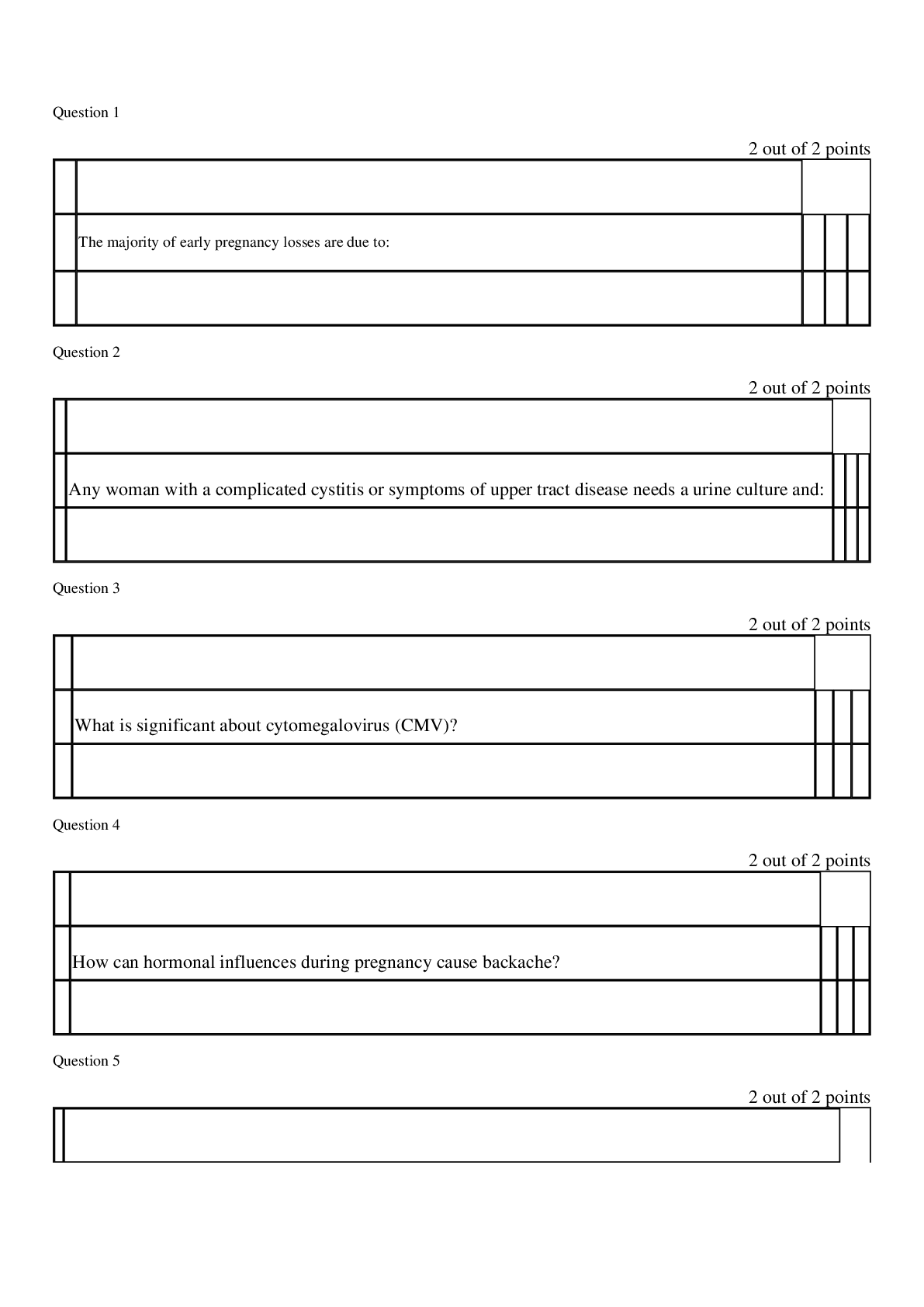Business Administration > STUDY GUIDE > BUSN 132 Solution Manual for Quantitative Methods for Business; Introduction To Probability.(STUDY G (All)
BUSN 132 Solution Manual for Quantitative Methods for Business; Introduction To Probability.(STUDY GUIDE)
Document Content and Description Below
Chapter 2 Introduction to Probability Learning Objectives 1. Obtain an understanding of the role probability information plays in the decision making process. 2. Understand probability as ... a numerical measure of the likelihood of occurrence. 3. Be able to use the three methods (classical, relative frequency, and subjective) commonly used for assigning probabilities and understand when they should be used. 4. Be able to use the addition law and be able to compute the probabilities of events using conditional probability and the multiplication law. 5. Be able to use new information to revise initial (prior) probability estimates using Bayes' theorem. 6. Know the definition of the following terms: experiment addition law sample space mutually exclusive event conditional probability complement independent events Venn Diagram multiplication law union of events prior probability intersection of events posterior probability Bayes' theorem Simpson’s Paradox Solutions: 1. a. Go to the x-ray department at 9:00 a.m. and record the number of persons waiting. b. The experimental outcomes (sample points) are the number of people waiting: 0, 1, 2, 3, and 4. Note: While it is theoretically possible for more than 4 people to be waiting, we use what has actually been observed to define the experimental outcomes. c. Number Waiting Probability 0 .10 1 .25 2 .30 3 .20 4 .15 Total: 1.00 d. The relative frequency method was used. 2. a. Choose a person at random, have her/ him taste the 4 blends and state a preference. b. Assign a probability of 1/4 to each blend. We use the classical method of equally likely outcomes here. c. Blend Probability 1 .20 2 .30 3 .35 4 .15 Total: 1.00 The relative frequency method was used. [Show More]
Last updated: 2 years ago
Preview 1 out of 13 pages

Buy this document to get the full access instantly
Instant Download Access after purchase
Buy NowInstant download
We Accept:

Reviews( 0 )
$13.50
Can't find what you want? Try our AI powered Search
Document information
Connected school, study & course
About the document
Uploaded On
Jul 03, 2020
Number of pages
13
Written in
Additional information
This document has been written for:
Uploaded
Jul 03, 2020
Downloads
0
Views
84
















